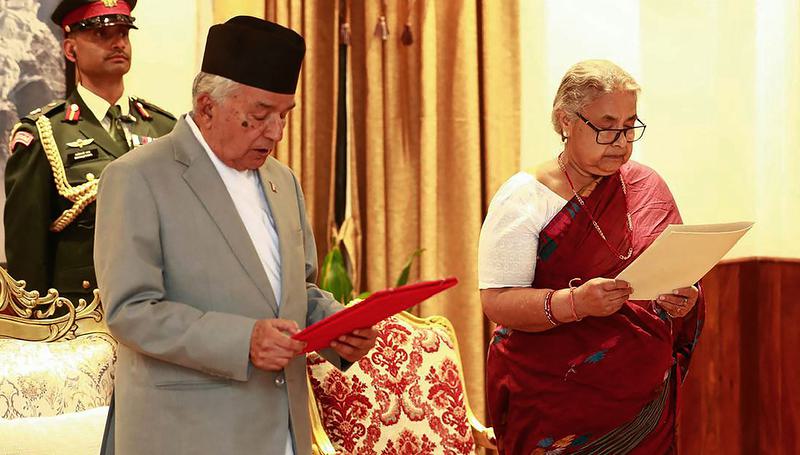STAR Missile
- 16 Sep 2025
In News:
India has developed the Supersonic TARget (STAR) missile — an indigenous, reusable high-speed target system designed to reproduce modern cruise-missile and anti-ship threat profiles for realistic training and validation of sensors, weapons and doctrines. STAR replaces expensive imported target systems and fills a critical gap in live realistic training for the Navy, Air Force and Army.
What STAR does
STAR is not a combat weapon but a high-fidelity aggressor platform that simulates hostile supersonic missiles so air defence systems, shipborne weapons and interceptor pilots can practise time-critical engagements under realistic conditions. It can mimic sea-skimming runs, steep dives and evasive manoeuvres to test detection, tracking and interception chains end-to-end.
Key technical features
- Propulsion: Two-stage system — a solid booster for launch followed by a Liquid Fuel Ramjet (LFRJ) for sustained supersonic cruise. The ramjet experience is also being matured for future systems (e.g., Astra Mk-3 development).
- Speed: Mach 1.8–2.5 (roughly 612–850 m/s).
- Altitude & profiles: Operates from low sea-skimming heights (as low as ~12 feet above water) up to ~10 km, and can execute high-speed dives and complex manoeuvres.
- Range & flight time: Designed for missions between 55–175 km with flight durations of ~50–200 seconds, enabling diverse scenario replication.
- Variants:
- Air-launched STAR (carried by combat aircraft such as LCA Tejas) to emulate air-to-air or air-to-ground supersonic threats and anti-radar/anti-AWACS profiles.
- Ground-launched STAR (truck-mounted) for shore-based or remote launches without extensive infrastructure.
- Operational utility: High manoeuvrability, programmable trajectories and safe recovery/destruction options make it suitable for repeated use in trials.
Operational and strategic significance
- Realism in training: STAR provides time-critical, live target practice that simulations alone cannot offer — particularly valuable against low-altitude, high-speed cruise profiles which compress engagement timelines.
- Atmanirbhar Bharat: Fully indigenous development reduces dependency on foreign target systems, cuts recurring costs, and supports domestic missile-R&D ecosystems. STAR is reusable and cost-effective relative to imported alternatives.
- Force integration: Its modular design serves tri-service needs, helping calibrate ship radars, point-defence systems, interceptor missiles, and fighter tactics in joint exercises.
- R&D multiplier: The ramjet and guidance technologies validated on STAR feed into broader missile-development programs, strengthening long-term indigenous capabilities. Analysts also view STAR as a potential seed technology that could be adapted into tactical offensive roles in the future (e.g., anti-radar or precision suppression platforms), should doctrinal decisions and legal frameworks permit.
Development status and outlook
As of mid-2025, STAR progressed into advanced development and flight validation phases — integrating propulsion, guidance and control subsystems and conducting combat-style trials. Operational induction for routine service trials and training is anticipated as tests mature.
Cicadas
- 16 Sep 2025
In News:
The recent reappearance of cicadas in Kerala’s Silent Valley National Park — after decades of absence — has intrigued ecologists. It is being seen both as a possible indicator of ecosystem recovery and as a warning signal of ecological disruption caused by climate change and habitat alteration.
About Silent Valley
Located in the Nilgiri Hills of Kerala’s Western Ghats, Silent Valley National Park spans about 90 sq. km and represents one of India’s most pristine tropical rainforests. The forest’s name owes itself to the striking absence of cicada calls, which are ubiquitous in most tropical forests. The absence of these insects — known for their high-decibel songs — was noted as early as the 1840s by British botanist Robert Wight, making it an ecological enigma.
Understanding Cicadas
Cicadas are hemipteran insects recognized for their loud, species-specific acoustic signals. They spend most of their lives underground as nymphs, feeding on tree root sap, before emerging for a short adult phase primarily to mate.
- Habitat: Mostly canopy dwellers in natural forests with mature trees.
- Types:
- Annual cicadas – emerge every year in summer, often camouflaged among trees.
- Periodical cicadas – emerge collectively after 13 or 17 years of dormancy.
- Ecological Roles:
- Aerate soil and enhance nutrient cycling.
- Serve as prey for birds, reptiles, and mammals.
- After death, their bodies enrich soil nitrogen, aiding forest regeneration.
The Mystery of Silence
Unlike most tropical forests, Silent Valley lacked the characteristic cicada chorus. Scientists have proposed several hypotheses for this anomaly:
- Microclimate Conditions: The valley’s bowl-shaped topography, constant mist, and moisture-rich soils may hinder nymph development that prefers drier soil.
- Vegetation Composition: Unique tree species and leaf litter dynamics may not support cicada life cycles.
- Historical Climatic Shifts: Subtle long-term climate variations might have altered habitat suitability.
- Natural Absence Hypothesis: Cicadas may never have colonized this particular ecosystem in significant numbers.
Return of the Cicadas
Recent field surveys and local observations indicate a gradual resurgence of cicada populations in certain forest patches.
- Possible Causes:
- Shifts in vegetation structure and canopy composition.
- Rising temperatures and erratic rainfall patterns altering habitat conditions.
- Natural dispersal from adjoining forest landscapes.
Ecological and Conservation Implications
The reappearance of cicadas serves as a bioindicator — revealing subtle ecological shifts often invisible to human monitoring.
- It may represent resilience and natural regeneration following decades of conservation success since the 1984 ban on the Silent Valley hydroelectric project.
- Alternatively, it might indicate climate instability and biodiversity imbalance, as species distributions shift in response to anthropogenic pressures.
Silent Valley’s surrounding areas now face deforestation, plantation expansion, and tourism pressure, threatening its delicate ecological balance. Continuous long-term monitoring of insect diversity, vegetation, and microclimate is essential to interpret whether this trend marks recovery or disruption.
Revisiting the Right to Information (RTI) in the Age of Data Protection

- 16 Sep 2025
In News:
The recent amendment to the Right to Information (RTI) Act, 2005 through the Digital Personal Data Protection (DPDP) Act, 2023 has sparked an intense debate on the balance between citizens’ right to information and the right to privacy. Critics argue that the change could transform India’s celebrated transparency law into a “Right to Deny Information”, undermining democratic accountability.
Evolution and Purpose of the RTI Act
- Enacted in 2005, the RTI Act is one of India’s most significant democratic reforms, aimed at promoting transparency, accountability, and citizen empowerment. It gives citizens the legal right to access information from public authorities, including government ministries, departments, and publicly funded organizations.
- Under the Act, public authorities are required to respond within 30 days to RTI requests. It also imposes penalties on officials who fail to provide information without valid reasons. Exemptions are limited to cases involving national security, confidential investigations, or information that could endanger individuals’ safety.
- The RTI rests on a foundational democratic principle — information held by the government belongs to the people. The state is merely a custodian of this information, accountable to citizens.
Amendment Through the DPDP Act, 2023
- Earlier, Section 8(1)(j) of the RTI Act permitted the disclosure of personal information if such disclosure served a larger public interest, such as exposing corruption or verifying implementation of welfare schemes.
- The DPDP Act, 2023 amended this clause, removing the public interest override and prohibiting disclosure of personal data altogether, even if it relates to public officials, unless legally mandated. This change effectively creates a blanket exemption for “personal information,” narrowing citizens’ access to critical public records.
Government’s Rationale
The Union government defends the amendment as an attempt to harmonize two fundamental rights —
- The Right to Privacy under Article 21, recognized by the Supreme Court in Justice K.S. Puttaswamy (2017), and
- The Right to Information under Article 19(1)(a).
According to the government, Section 8(2) of the RTI Act still allows disclosure if public interest outweighs privacy concerns, maintaining an “appropriate balance.” Officials argue that the amendment merely removes redundancy and ambiguity between the RTI and DPDP frameworks.
Criticisms and Concerns
However, legal experts, activists, and journalists warn that the amendment tilts the balance heavily toward secrecy, undermining the RTI’s original spirit.
- Dilution of Transparency:Without the “public interest” clause, authorities can refuse disclosure of crucial information, limiting citizens’ ability to scrutinize governance, corruption, or misuse of power.
- Broad Definition of ‘Personal Data’:The DPDP Act defines personal data expansively, enabling arbitrary denials of RTI requests, even for information concerning public servants’ official actions, assets, or decisions.
- Threat to Democratic Oversight:The amendment risks converting RTI from a tool of empowerment into a bureaucratic shield, curbing social audits and investigative journalism.
- Conflict with RTI’s Objective:The RTI was intended to shift power from public officials to citizens. Restricting access reverses this power dynamic, eroding democratic participation and accountability.
Judicial and Institutional Perspectives
- Justice K.S. Puttaswamy (Retd.) vs Union of India (2017):The Supreme Court upheld privacy as a fundamental right but emphasized it is not absolute and must be balanced with other rights, including transparency and public accountability.
- Supreme Court vs Subhash Chandra Agarwal (2019):The Court ruled that the office of the Chief Justice of India is subject to RTI and that judges’ asset declarations must be disclosed, reinforcing the primacy of public interest in promoting accountability.
- Justice A.P. Shah Committee on Privacy (2012):The expert group explicitly recommended that any privacy law should not dilute or override the RTI Act, asserting that transparency and privacy are complementary, not conflicting, principles.
Recommendations for Balance
- Narrow Definition of Personal Information:Limit exemptions only to information that genuinely compromises privacy, while allowing disclosure of public officials’ professional conduct, assets, and decisions.
- Training for Public Information Officers (PIOs):To ensure they interpret privacy clauses correctly and maintain the transparency-privacy balance.
- Strengthening Information Commissions:Empower Central and State Information Commissions with greater capacity and independence to adjudicate privacy-related disputes.
- Periodic Review:Establish a parliamentary oversight committee to review the impact of privacy laws on the RTI regime.
World’s First AI “Minister”

- 16 Sep 2025
In News:
In a historic first, Albania has appointed an AI-generated digital minister, named “Diella” (meaning ‘Sun’), to lead the country’s fight against corruption. The move, announced by Prime Minister Edi Rama, marks a pioneering experiment in AI-led governance, placing Albania at the forefront of the global debate on the use of artificial intelligence in public administration.
Background and Context
Albania has long struggled with systemic corruption, especially in public tenders, which have been at the centre of several high-profile scandals involving money laundering and organised crime. In response, the government has adopted an innovative approach — deploying AI to ensure transparency and accountability in governance.
Initially launched in January 2025, Diella began as an AI-powered virtual assistant helping citizens navigate e-Albania, the government’s online service portal. Dressed in traditional Albanian attire, the avatar symbolised the fusion of technology and national identity.
Following its successful trial, Diella has now been elevated to the rank of a “Digital Minister”, tasked with:
- Overseeing all public tenders, ensuring they are 100% corruption-free.
- Auditing tender decisions using data-driven algorithms for transparency.
- Recruiting global talent to strengthen Albania’s anti-corruption efforts.
- Promoting the digitisation of governance for efficiency and trust-building.
Ethical and Governance Concerns
While Diella’s appointment marks a milestone, it also highlights challenges associated with AI in governance:
- Bias and Discrimination: AI systems trained on flawed data may perpetuate societal biases.
- Accountability Gap: Ambiguity persists over who bears responsibility for AI-driven decisions — developers, operators, or governments.
- Data Privacy: Despite digital data laws, sensitive citizen information remains vulnerable.
- Job Displacement: Automation risks replacing administrative and clerical roles.
- Overdependence on Technology: Excessive reliance may undermine human judgment and empathy.
- Cybersecurity Threats: AI platforms are prone to hacking and data manipulation.
- Digital Colonization: Over-reliance on foreign AI technologies could erode national sovereignty.
India’s AI Governance Landscape
India has emerged as a global AI powerhouse through proactive policy initiatives:
- IndiaAI Mission (2024): ?10,300 crore initiative for AI research and common computing facilities (18,693 GPUs).
- BharatGen: First government-funded multimodal LLM (Large Language Model).
- Sarvam-1: Indigenous LLM supporting 10 major Indian languages (2 billion parameters).
- Hanooman’s Everest 1.0: Supports 35 Indian languages, expanding to 90.
- AI Centres of Excellence: Promoting innovation and AI startups nationwide.
- Digital Public Infrastructure (DPI): Integrates Aadhaar, UPI, DigiLocker, and AI solutions for efficient service delivery.
- e-Courts Phase III: Uses AI for smart case management and administrative reforms.
Nepal’s First Woman Prime Minister

- 16 Sep 2025
In News:
Nepal has entered a crucial phase of political transition with the appointment of Sushila Karki, former Chief Justice and now the country’s first woman Prime Minister. President Ram Chandra Poudel administered the oath of office after dissolving Parliament and announcing fresh elections for March 5, 2026, marking a historic moment in Nepal’s democratic evolution.
Background: Political Turmoil and Gen Z-Led Movement
The decision came amid widespread Gen Z-led protests against former Prime Minister K.P. Sharma Oli, whose administration was accused of corruption, authoritarianism, and a social media ban that triggered nationwide unrest.
Facing pressure from the streets, the military, and constitutional experts, President Poudel dissolved the House and endorsed Karki’s appointment — a move described as a “remedial measure” during a political crisis. The protests, dominated by youth and digital activists, reflected a broader demand for accountability, transparency, and generational change in Nepal’s governance.
Sushila Karki: A Symbol of Integrity and Democratic Renewal
Aged 73, Sushila Karki is widely regarded as an upright and anti-corruption crusader. She holds a Master’s degree in Political Science from Banaras Hindu University and a Law degree from Tribhuvan University. As Nepal’s first female Chief Justice (2016–17), she was known for her fearless stance against corruption and political interference in the judiciary.
Her appointment as interim Prime Minister is supported by protesters, the Army, and civil society, who view her as a neutral and reformist leader capable of restoring trust in institutions. Her immediate mandate includes:
- Restoring law and order and maintaining peace amid political uncertainty.
- Investigating the September 8 violence and prosecuting those responsible for civilian deaths and attacks on state infrastructure.
- Overseeing the 2026 general elections and ensuring a peaceful, transparent transfer of power.
- Initiating constitutional reforms to strengthen democratic accountability.
Constitutional and Institutional Context
Although some questioned the legality of appointing a non-political figure as Prime Minister following Parliament’s dissolution, constitutional experts assert the decision falls within emergency democratic legitimacy, given the scale of the crisis. The Nepal Army played a stabilizing role throughout the unrest, mediating between the President’s Office and the protesters to ensure an orderly transition.
India–Nepal Relations: Context and Continuity
India welcomed Karki’s appointment, emphasizing stability, peace, and partnership under the ‘Neighbourhood First’ Policy. Nepal’s political stability is vital for India due to geostrategic, cultural, and economic interlinkages.
1. Geopolitical Significance:Nepal shares borders with five Indian states — Sikkim, West Bengal, Bihar, Uttar Pradesh, and Uttarakhand. Situated between India and China, it holds strategic importance in South Asian geopolitics.
2. Defence& Security Cooperation:India and Nepal share deep military ties, including the long-standing tradition of conferring honorary ranks on each other’s Army Chiefs. The Gorkha Regiment further symbolizes this enduring relationship based on mutual respect and trust.
3. Economic and Developmental Partnership:India remains Nepal’s largest trade and investment partner, accounting for over 64% of its trade and 33.5% of total FDI (USD 670 million). Bilateral trade stood at USD 8.85 billion in FY 2022–23, with India importing surplus electricity from Nepal.
India also provides 1,500+ scholarships annually under ITEC and other programs, supporting Nepal’s human resource development.
4. Cultural and People-to-People Ties:The countries share civilizational and religious linkages, exemplified by sites like Pashupatinath Temple (Kathmandu), Janakpur (birthplace of Sita), and Bodh Gaya (India). Over 8 million Nepalis live and work in India, deepening cross-border social integration.
